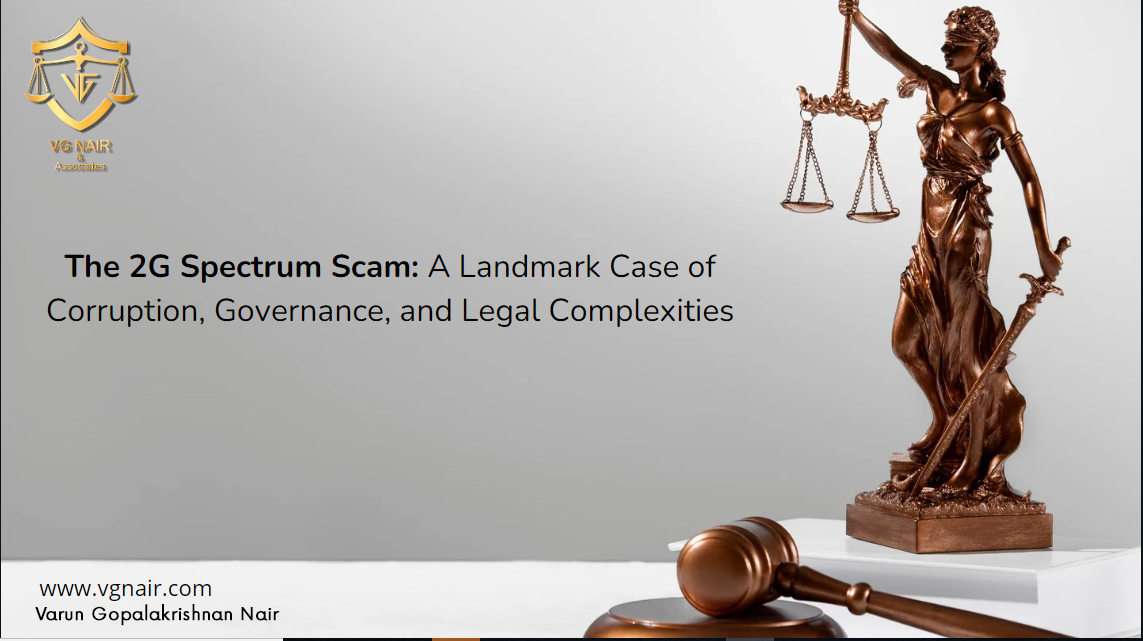The 2G Spectrum Scam A Landmark Case of Corruption Governance and Legal Complexities

The 2G spectrum scam, one of the largest corruption cases in Indian history, has exposed deep flaws in governance and accountability while triggering a prolonged legal battle. Despite the acquittal of key figures, such as A. Raja and Smt. K. Kanimozhi, marked a significant turning point, the ramifications of the scam continue to shape public discourse and added more trust in the justice system. This blog explores the background, legal outcomes, and the ongoing impact of the 2G spectrum scandal on India’s governance and reform needs.
Introduction to the 2G Spectrum Scam
The 2G spectrum scam emerged in the late 2000s and centered around the allocation of telecommunications licenses. The controversy primarily focused on then-Telecom Minister A. Raja, who was accused of improperly allocating licenses at undervalued prices, bypassing auction procedures, and favoring certain companies. These actions allegedly caused a notional loss of ₹1.76 lakh crore (approximately $40 billion) to the government. This scandal not only rocked Indian politics but also significantly undermined public confidence in the system, leading to calls for accountability and reforms in the telecom sector.
Legal Outcomes of the 2G Spectrum Scam
The legal journey of the 2G spectrum scam has been long and intricate. A major turning point came on December 21, 2017, when a special Central Bureau of Investigation (CBI) court acquitted all 18 accused, including A. Raja and Smt.K. Kanimozhi. The court pointed to the prosecution's inability to provide substantial evidence, citing serious flaws in the investigation and weak interpretations of key facts. Special Judge O.P Saini criticized the case for relying on assumptions rather than hard evidence, leading to the acquittal of the accused.
Despite this acquittal, the Supreme Court's ruling in February 2012 had already annulled 122 telecom licenses issued during Raja's tenure, deeming the process unconstitutional and arbitrary. The Court's decision emphasized the importance of auction-based allocations to ensure transparency and fairness in public resource management, a principle that remains a key reform in India's telecom policies today.
Public Perception and the Need for Systemic Reforms
While the legal verdicts in the 2G spectrum case have stirred mixed reactions, many still question the effectiveness of India’s legal system in tackling large-scale corruption. The acquittal of high-profile political figures raised concerns about judicial integrity, fueling skepticism over whether justice can be served in cases involving powerful individuals and corporations. As the CBI continues its appeal efforts, the case underscores the complexities of prosecuting corruption cases, highlighting the challenges in gathering sufficient evidence and navigating legal hurdles.
Conclusion: A Call for Reform and Transparency
The 2G spectrum scam remains a defining chapter in India’s battle against corruption. The case not only prompted major legal reforms in telecom resource allocation but also illuminated broader governance issues that continue to affect public trust. As India moves forward, systemic reforms in governance, transparency, and accountability are essential to restore faith in the justice system and prevent similar scandals from undermining democratic institutions.
In summary, the 2G spectrum case serves as both a cautionary tale and a catalyst for change, driving critical conversations about the future of governance and justice in India.
Published by Adv.Varun Gopalakrishnan Nair {VG Nair&Associates}
